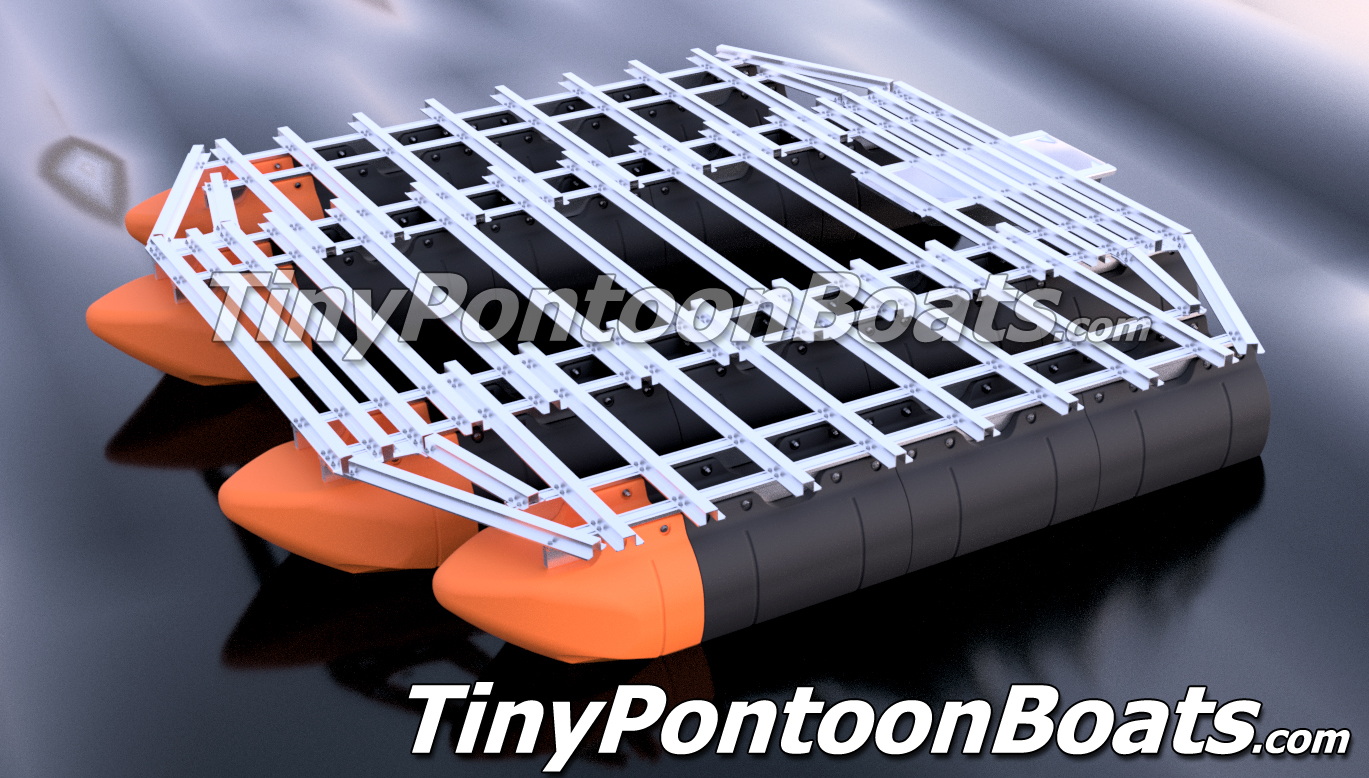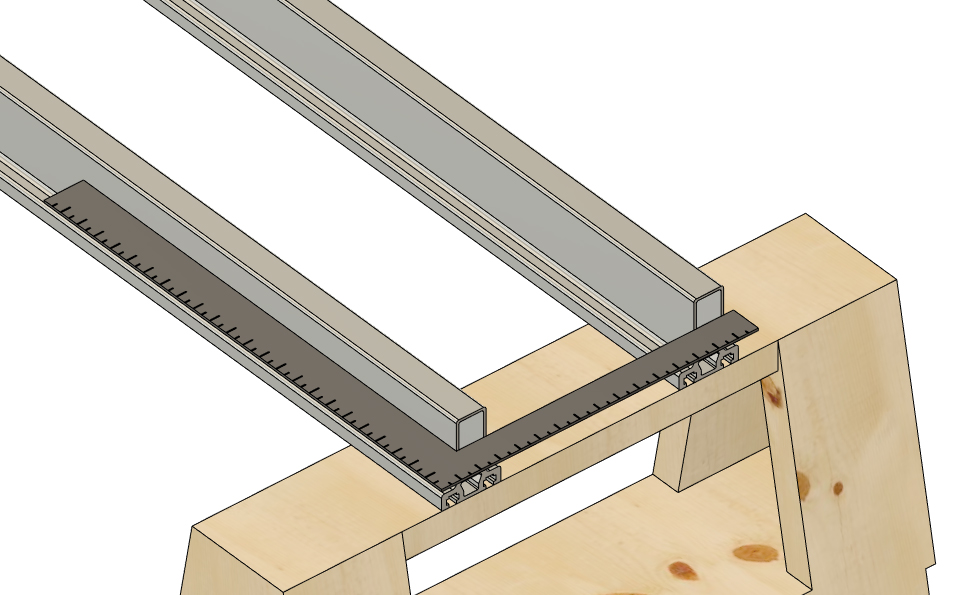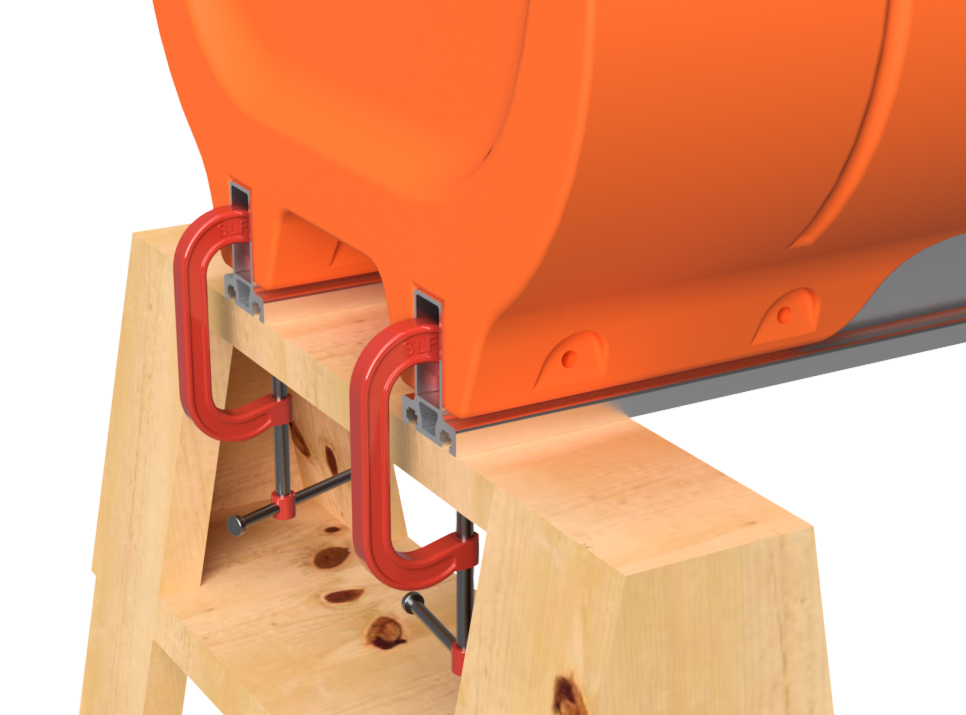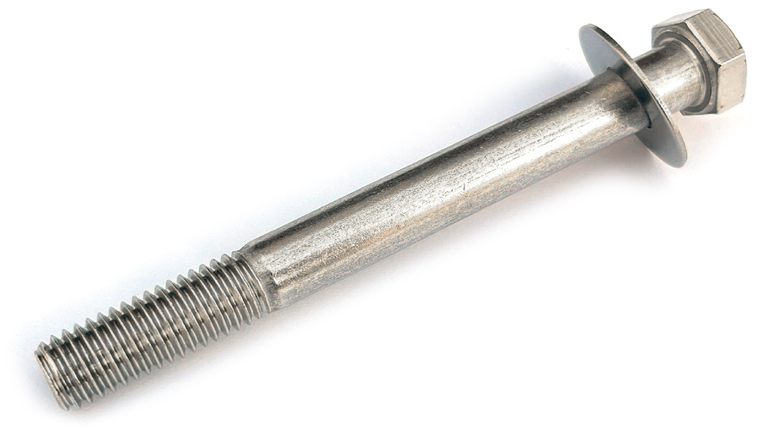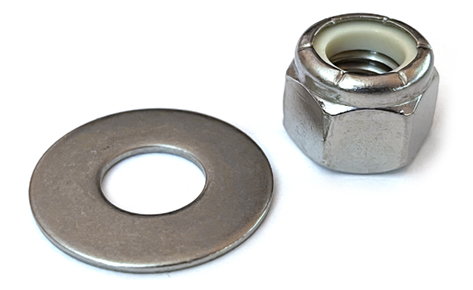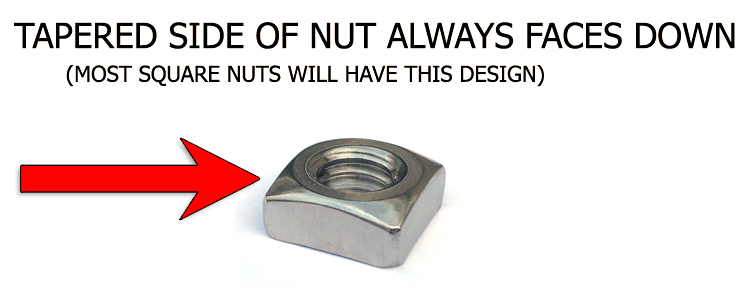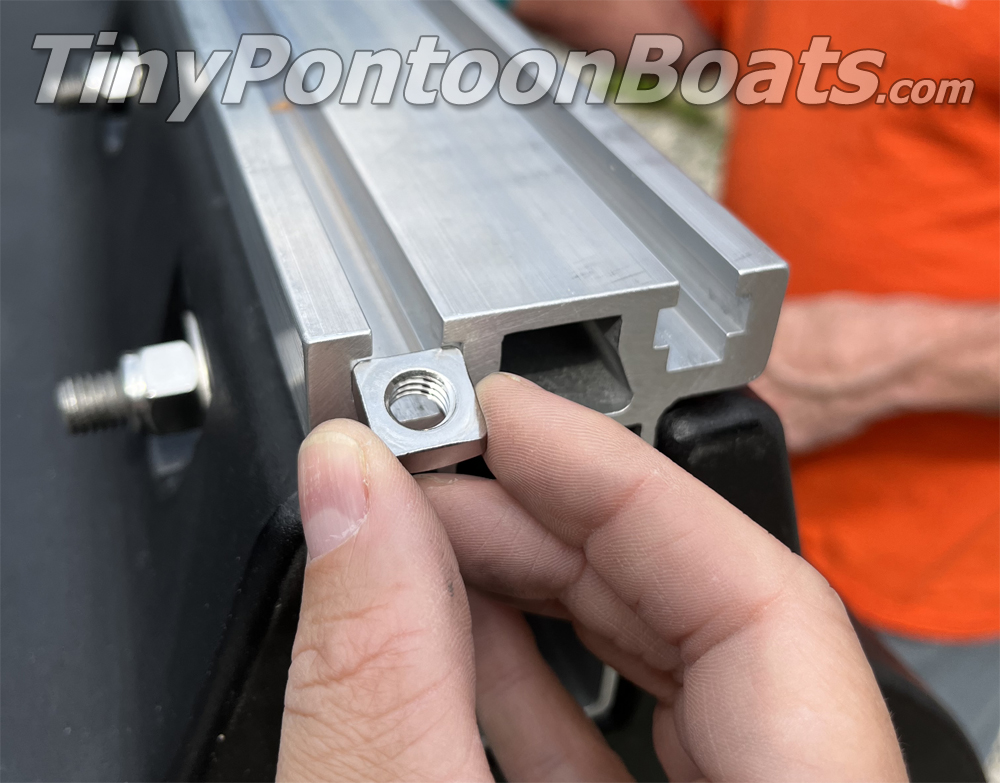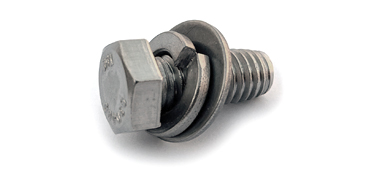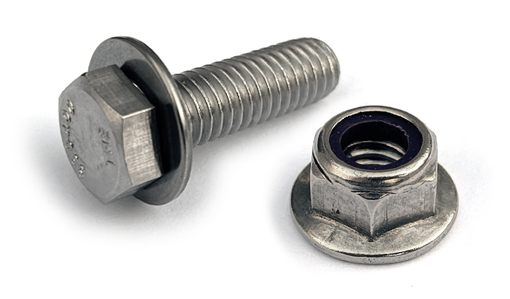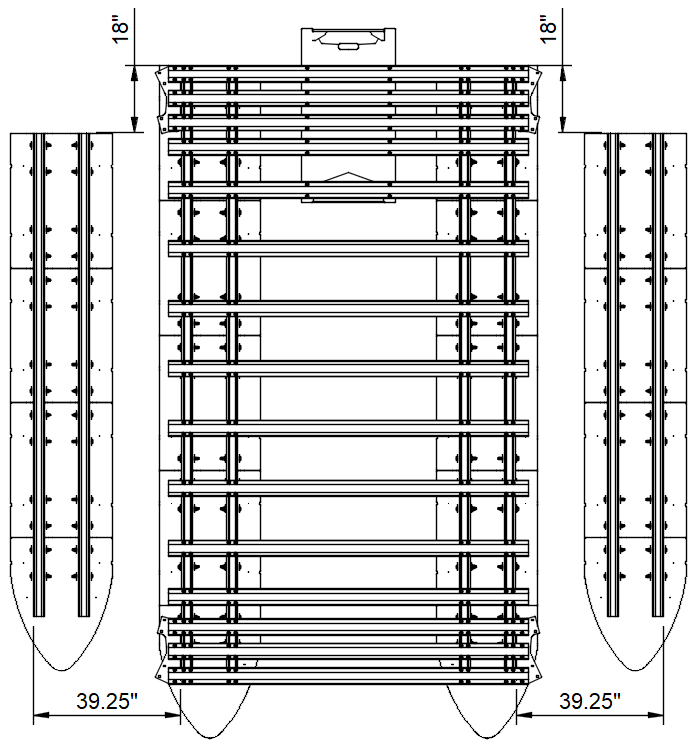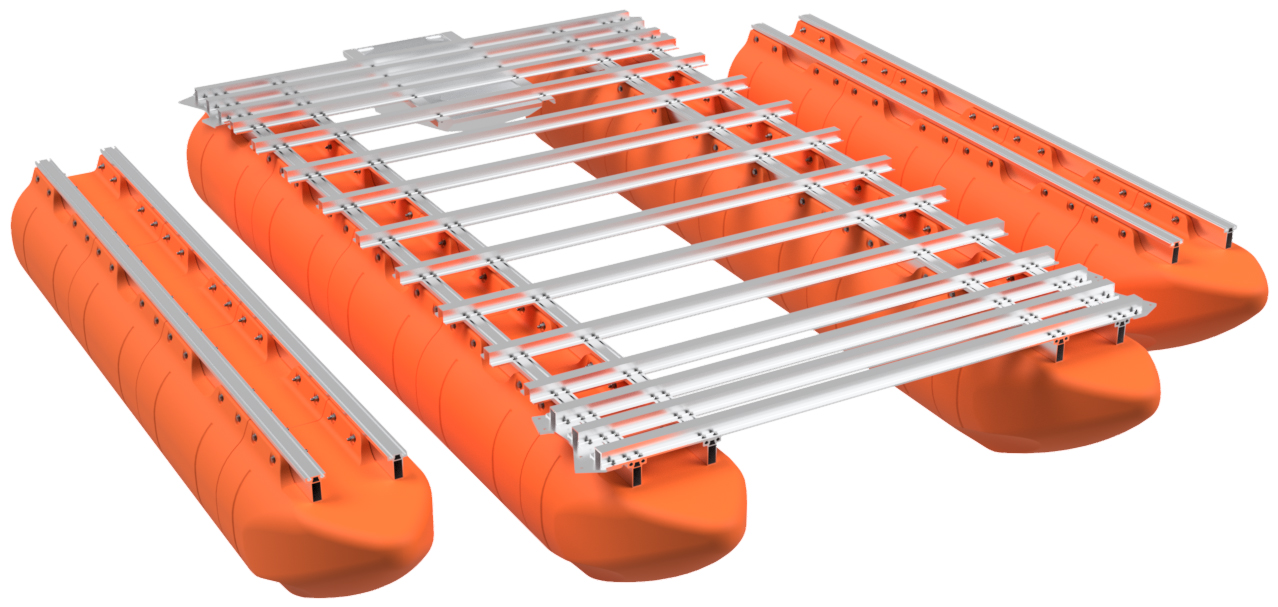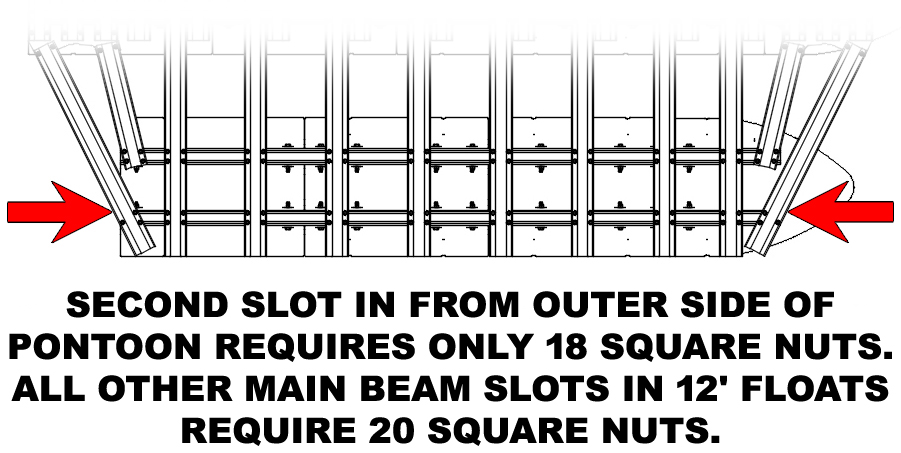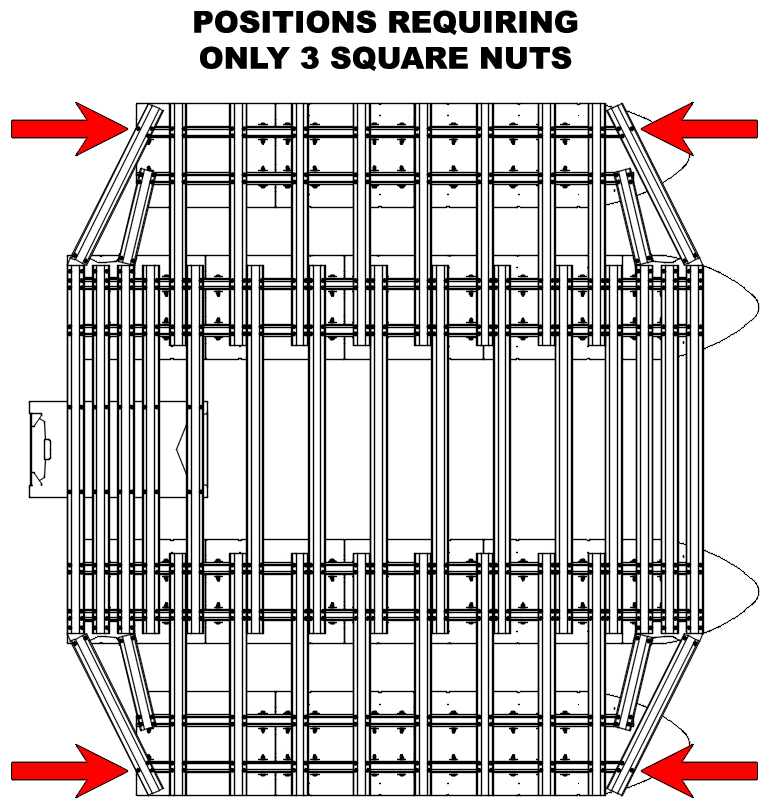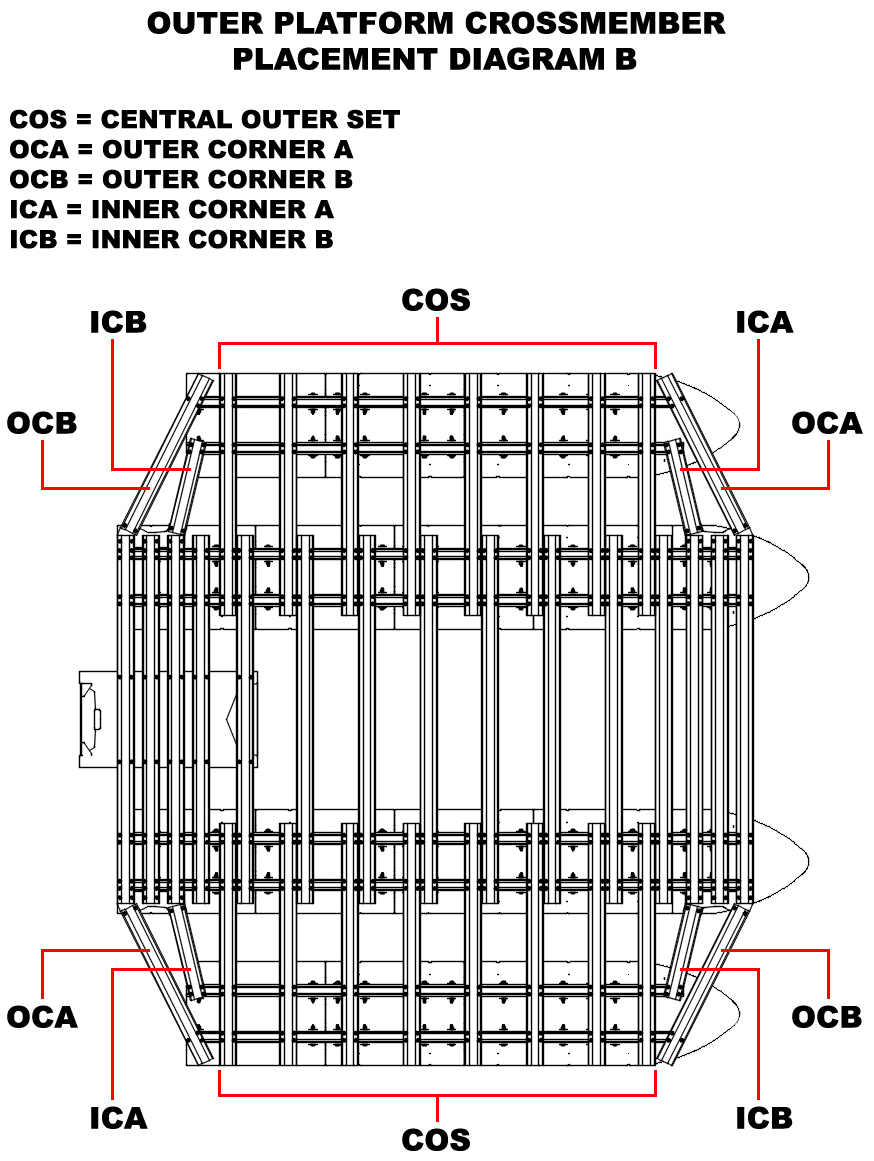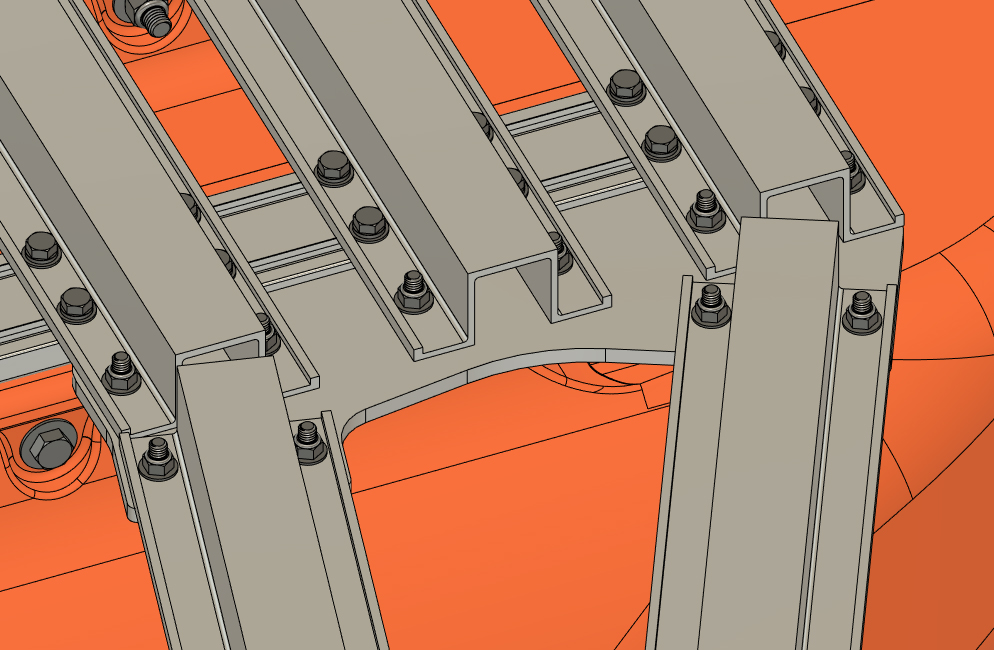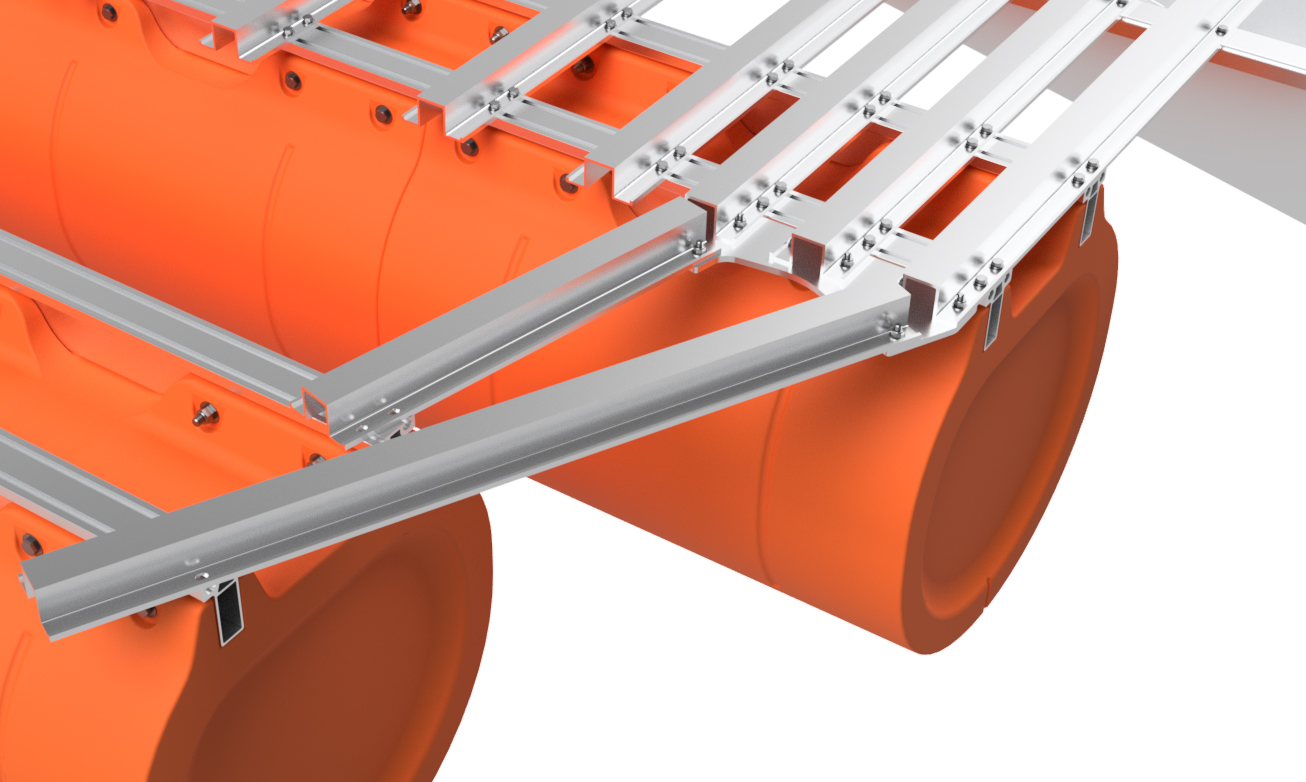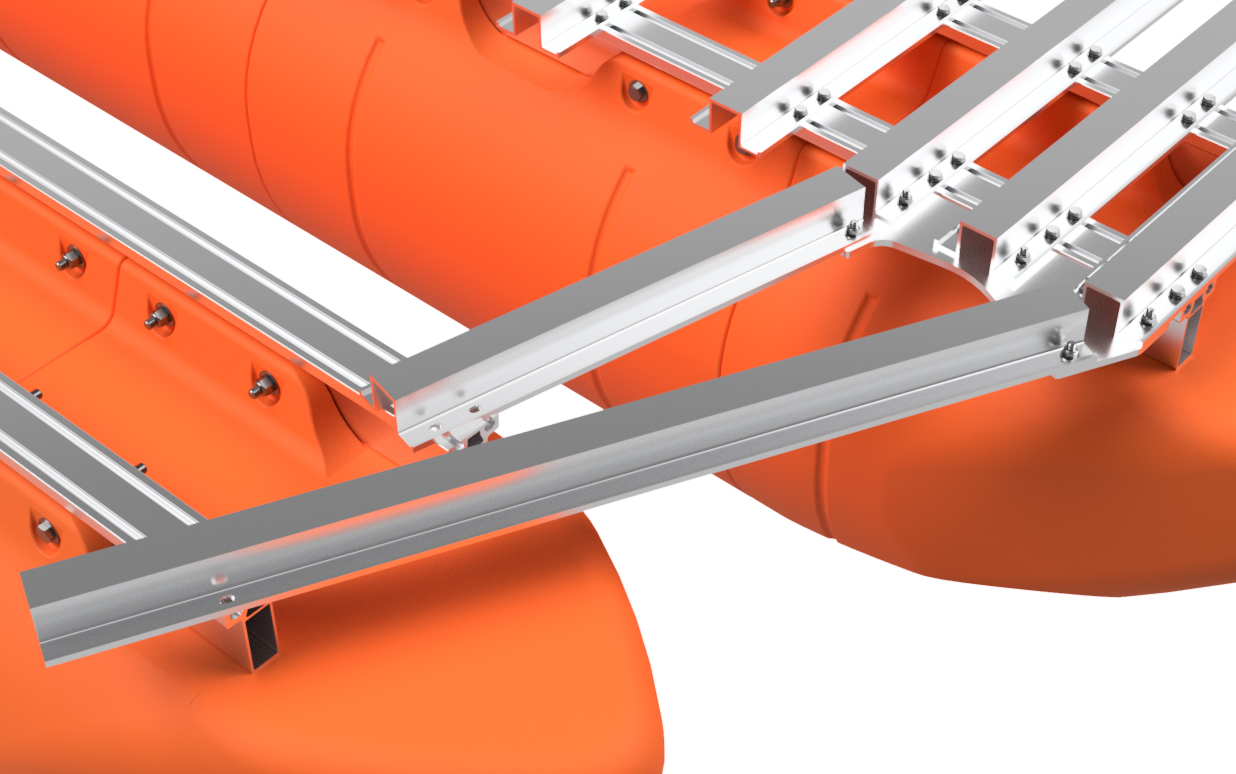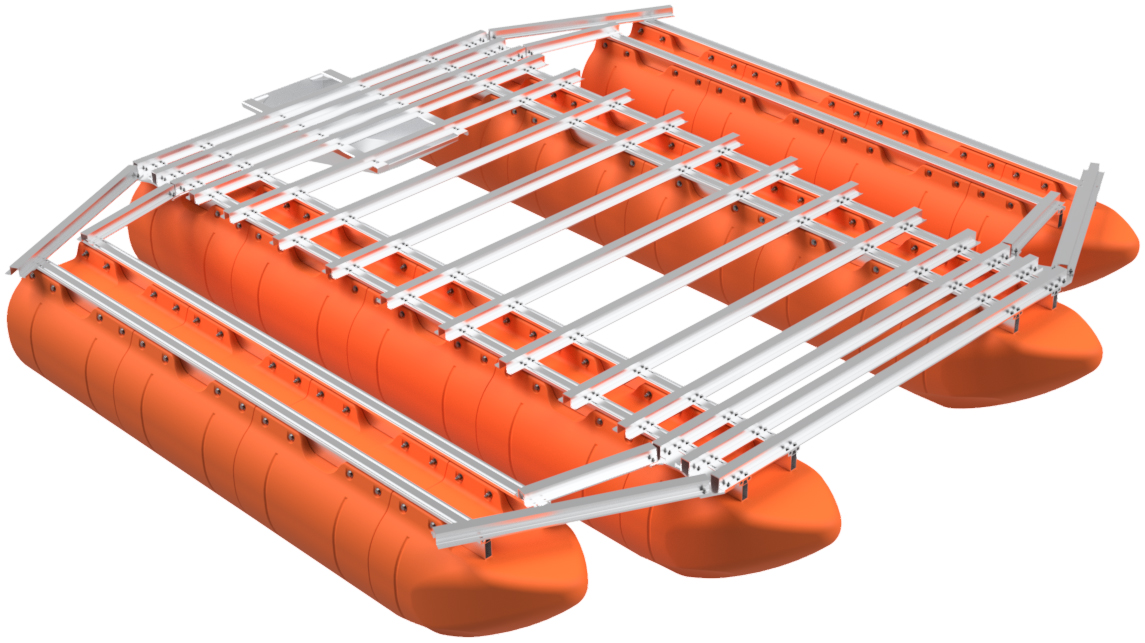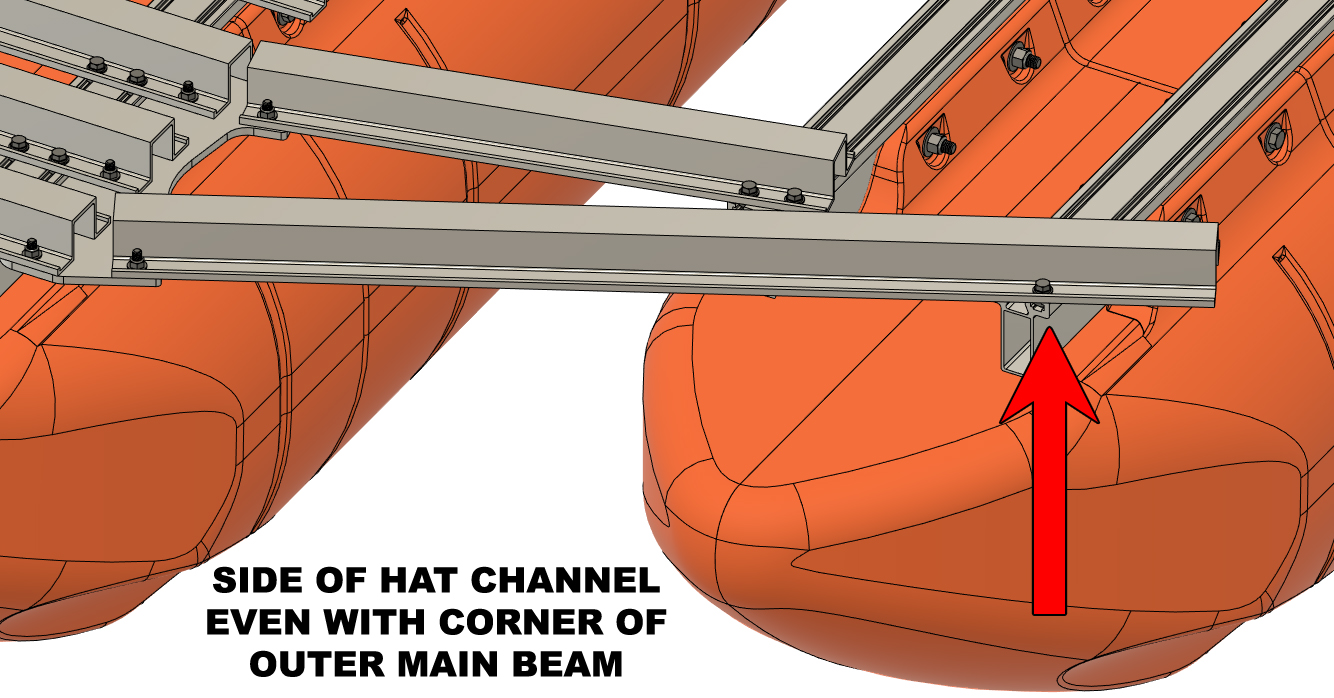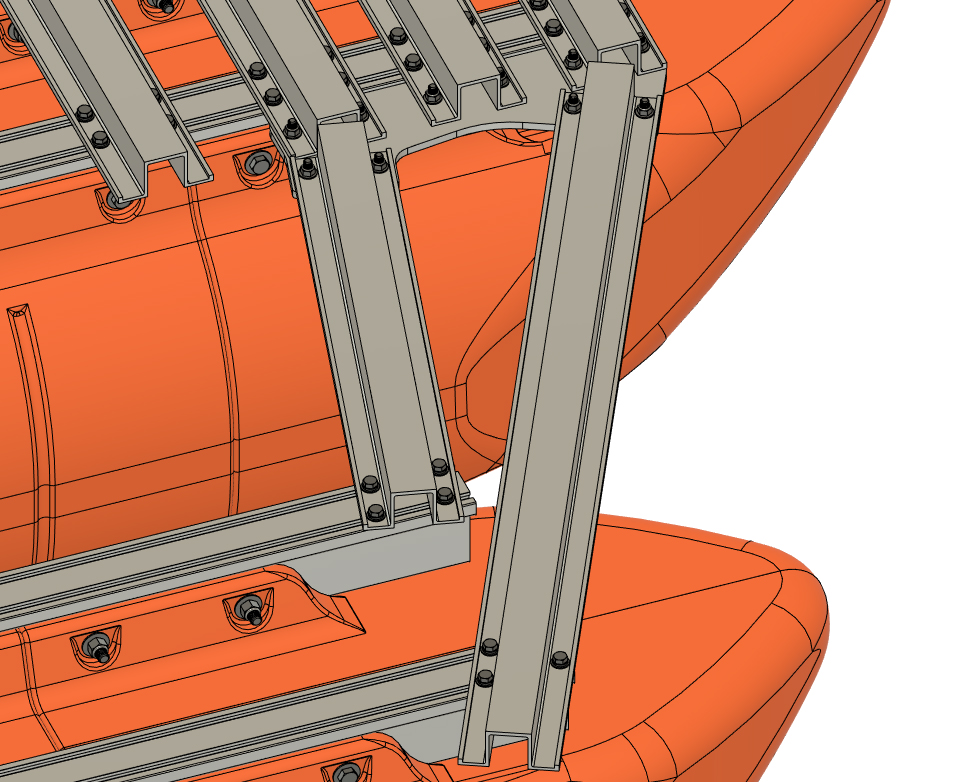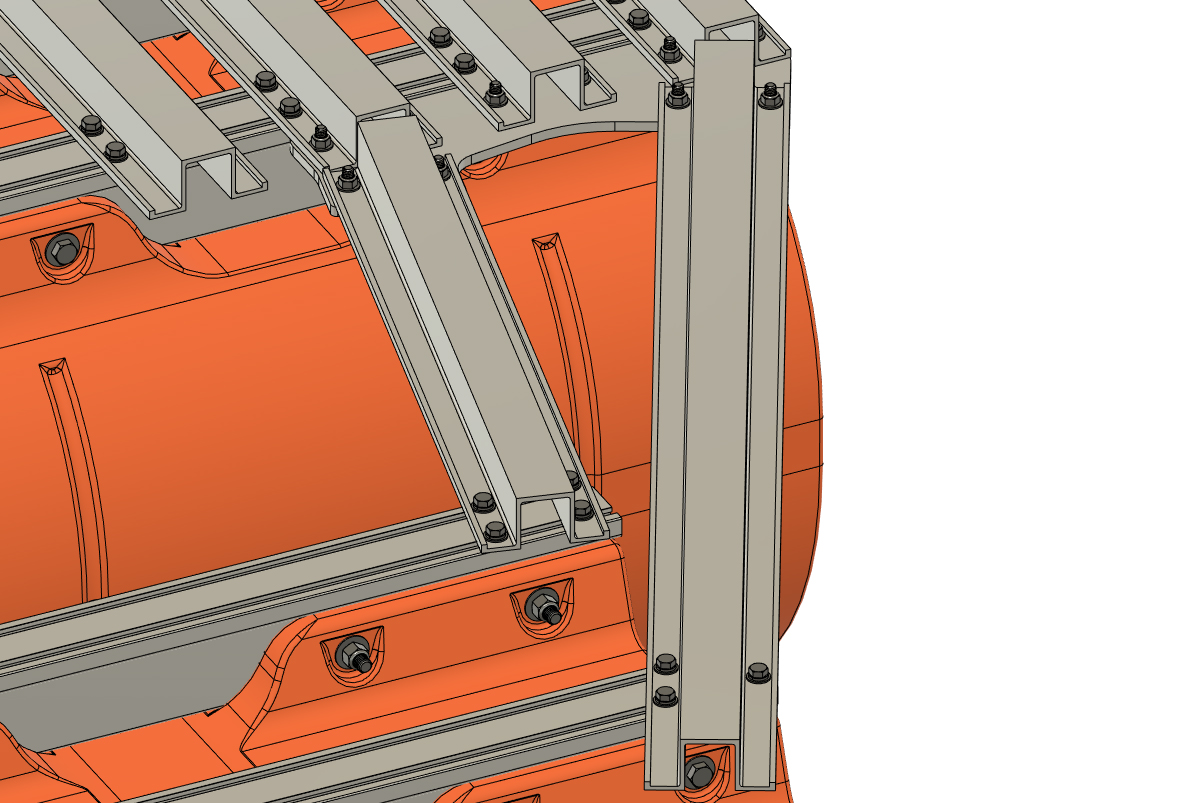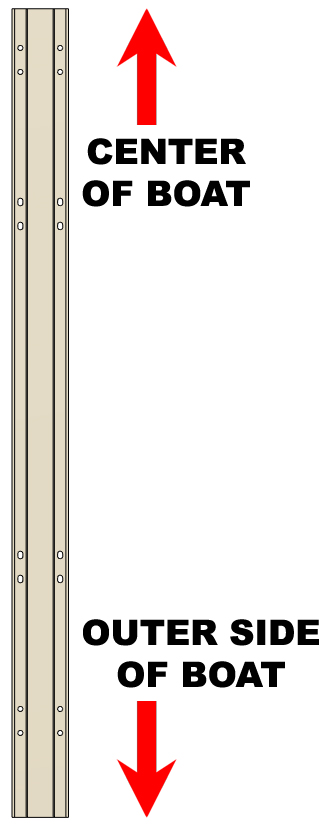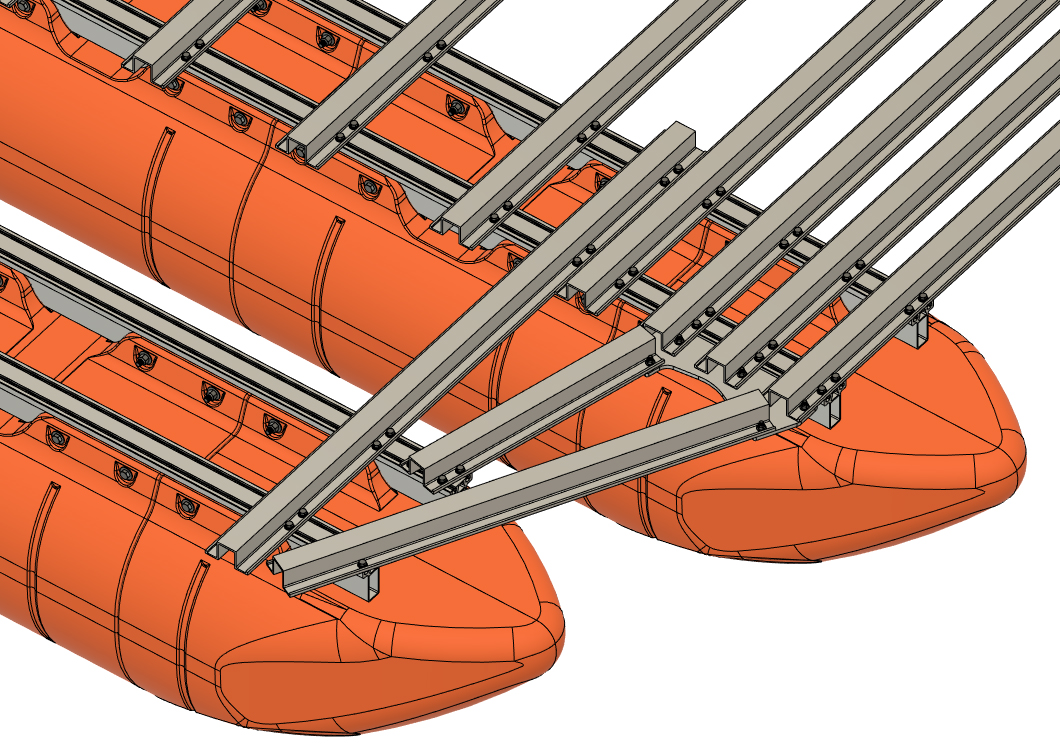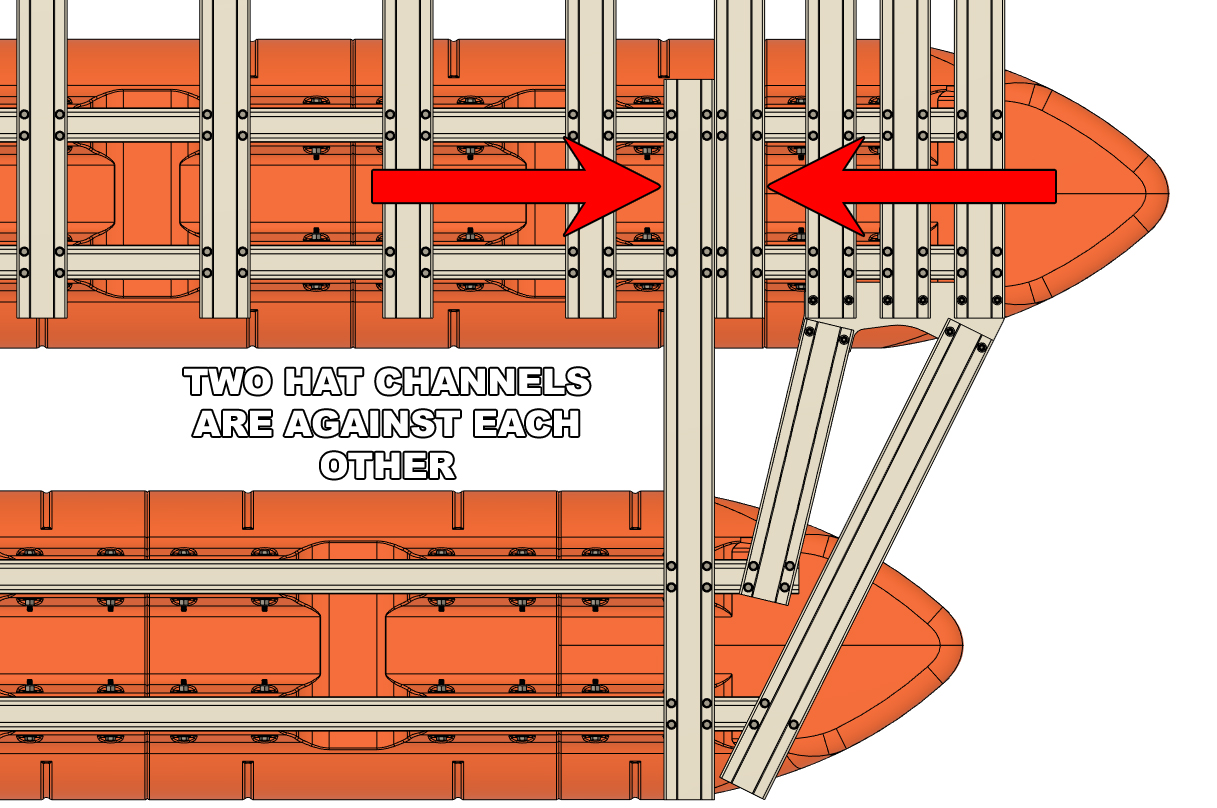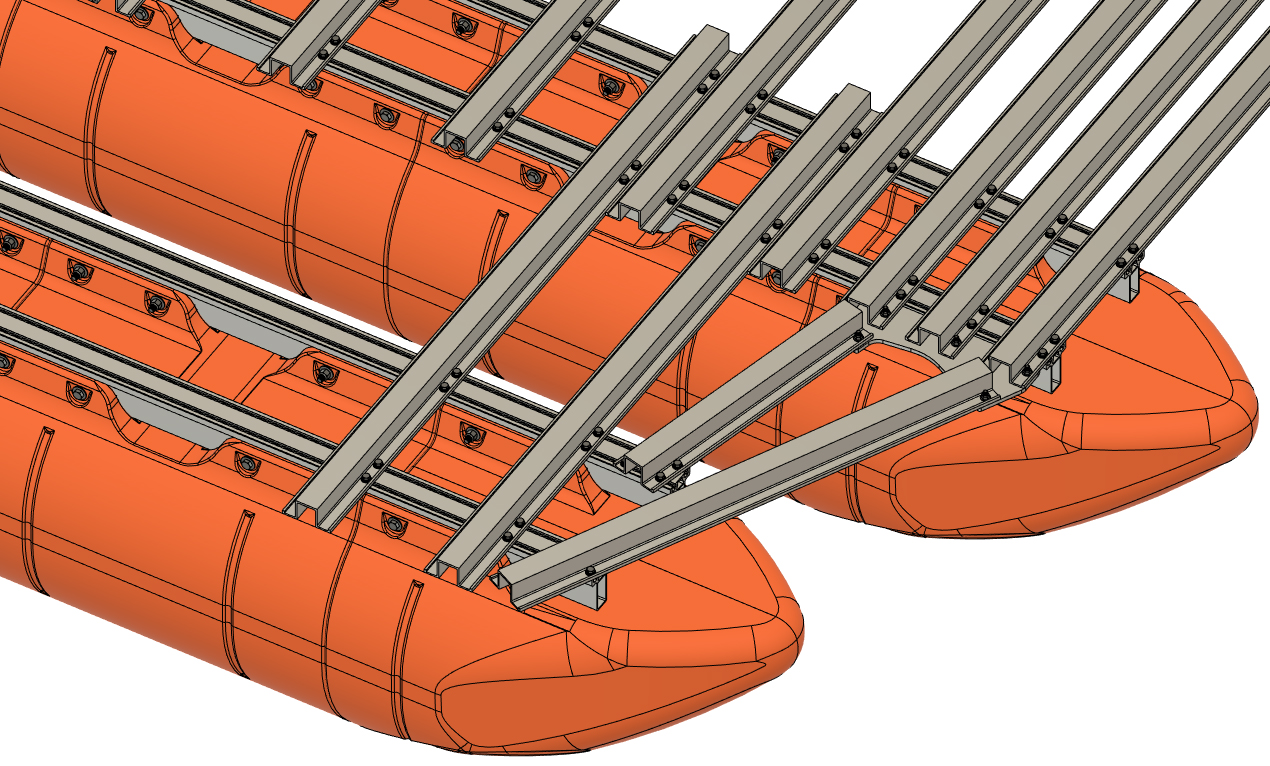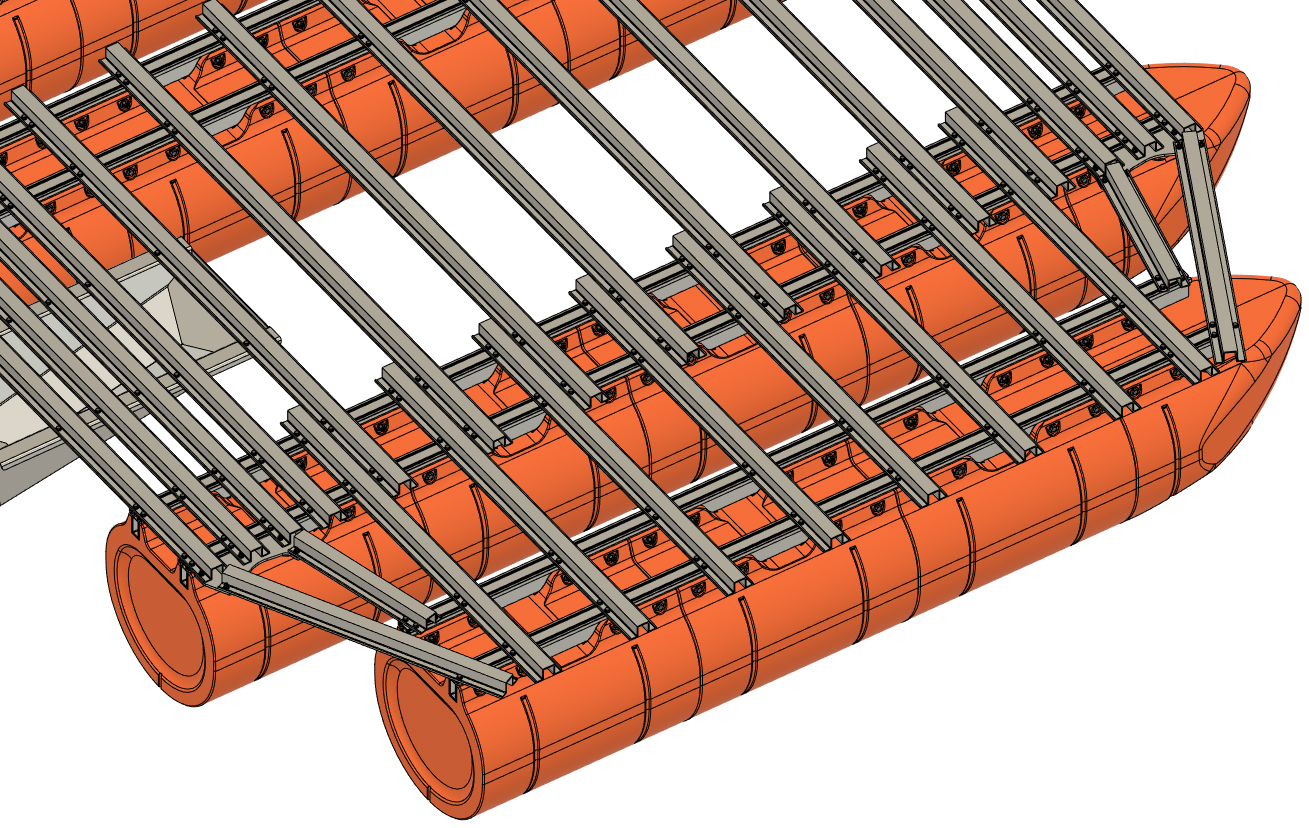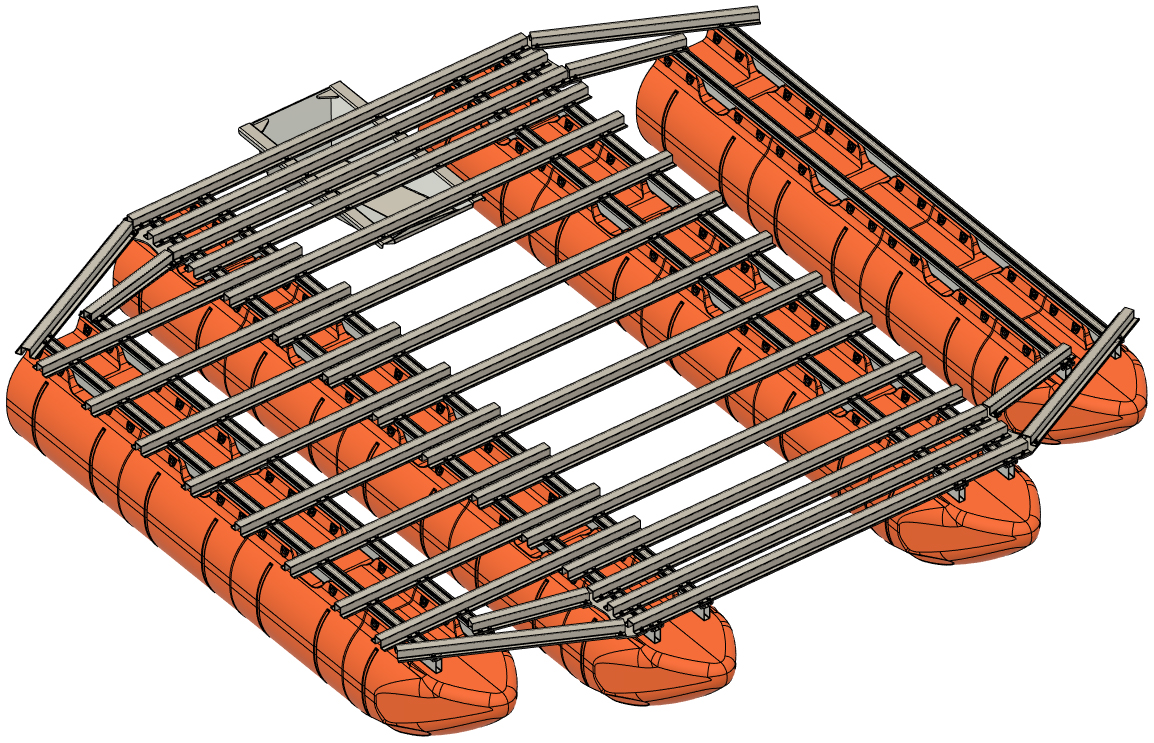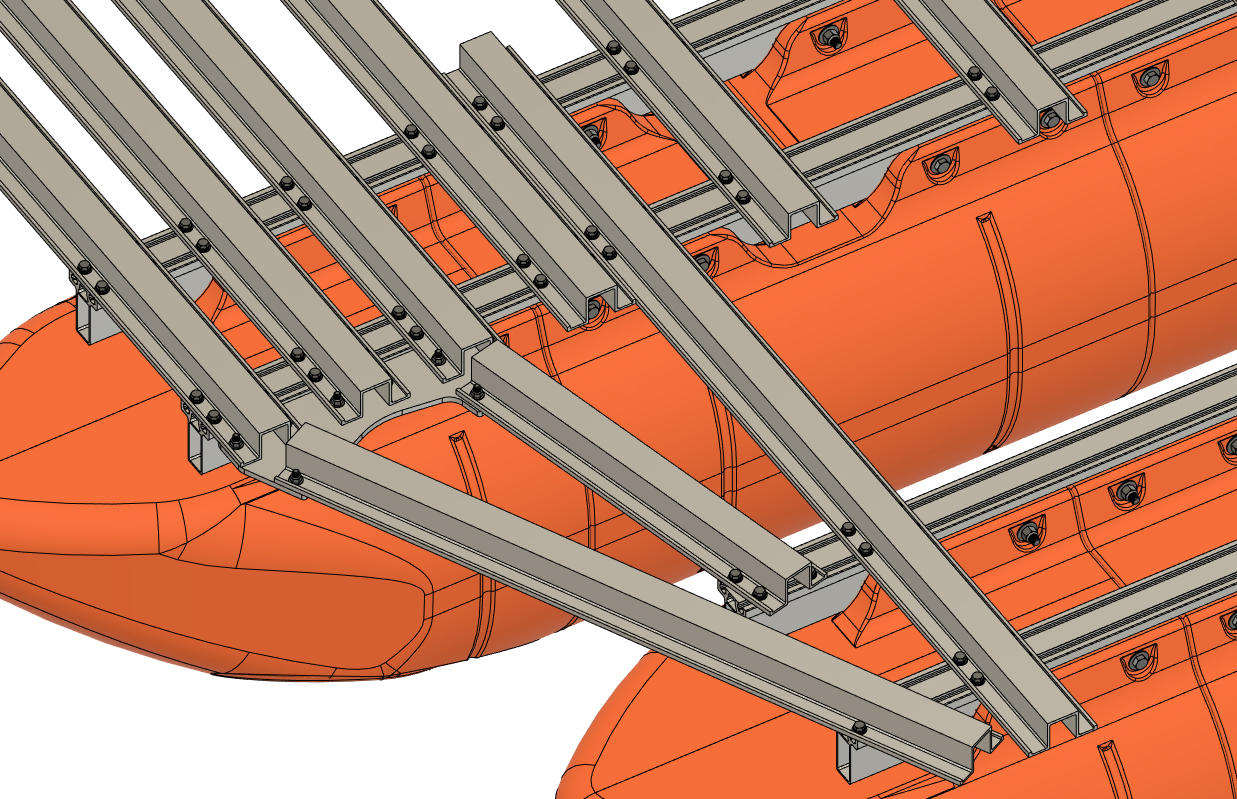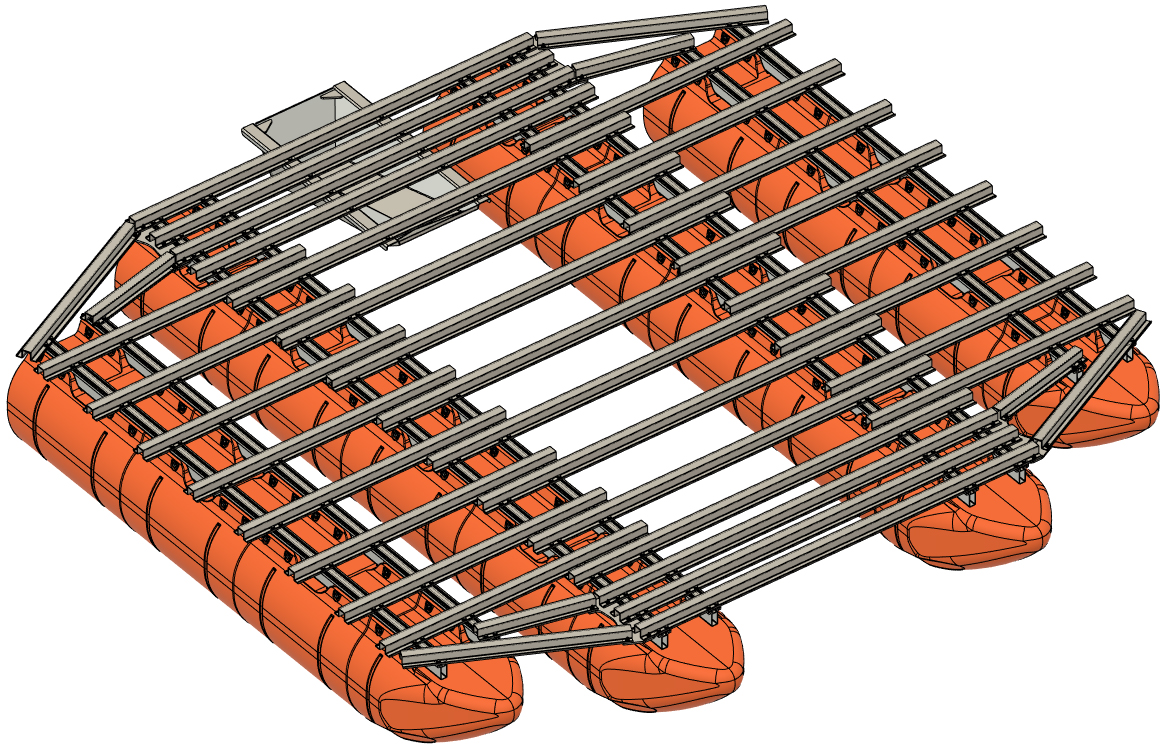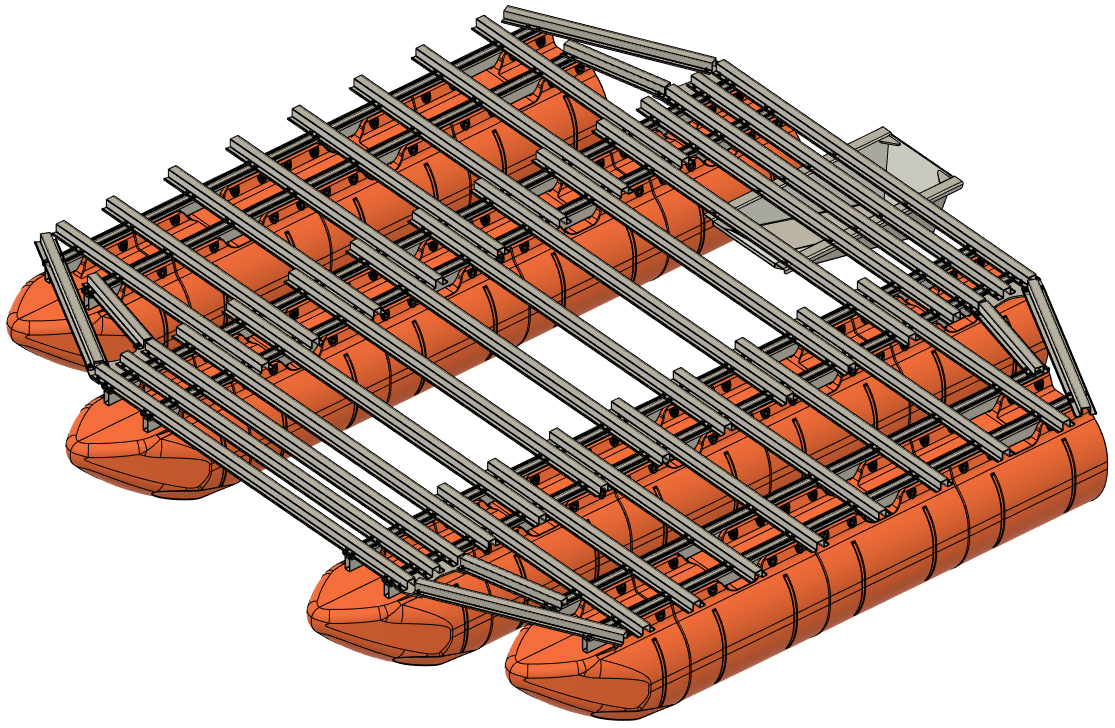

|
REQUIRED TOOLS
The frame and pontoon assembly for our 15'x15' Flying Octagon tiki style boat kit requires a few basic tools, as well as a couple specialized tools. Below we have provided a list of everything that you'll need, as well as part numbers and links to where you can get the specialized tools from McMaster, which is a reasonably priced industrial supplier. Click on the part number to view the item on the McMaster website. Many customers will already have the majority of these tools, if not all of them. These tools (other than perhaps the transfer punch) should be stocked at your local home supply or hardware store as well.
|




|





|
STEP 4
Place a nose cone float on the front of the pontoon assembly as shown. Due to the shape of the nose cone, you will not be able to place a ratchet strap over it.
|
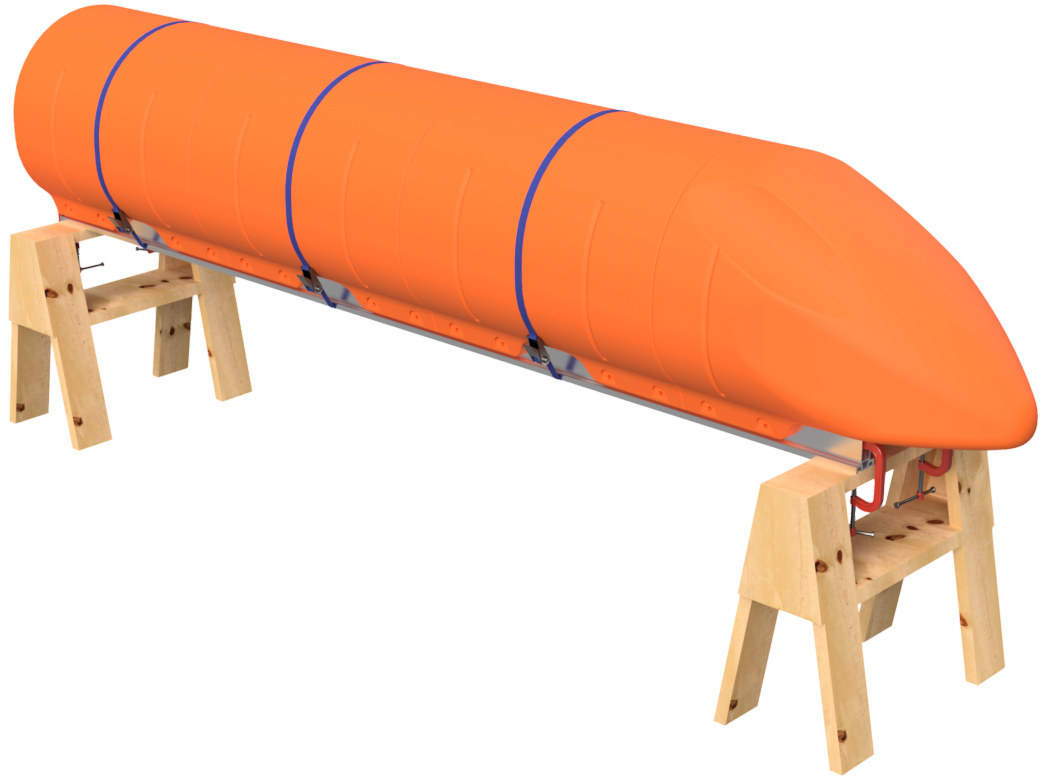
|


|
STEP 6
Remove the ratchet straps. Before removing the floats, number the positions of the floats on the main beams as shown. Number the floats and main beams on both sides of the pontoon assembly. For instance, if you're building a 12' long pontoon, you'll want to label position 1, 2, 3, and 4 on one side and 5,6,7, and 8 on the other. This ensures that you don't mix up the positions of the floats after you drill holes. You can use a piece of masking tape to write on or you can use a marker to write on the floats and main beams. If using a marker, lacquer paint thinner will remove the ink after assembly, and the paint thinner will not hurt the plastic or the aluminum. Remove the floats and unclamp the main beams from the saw horses.
|
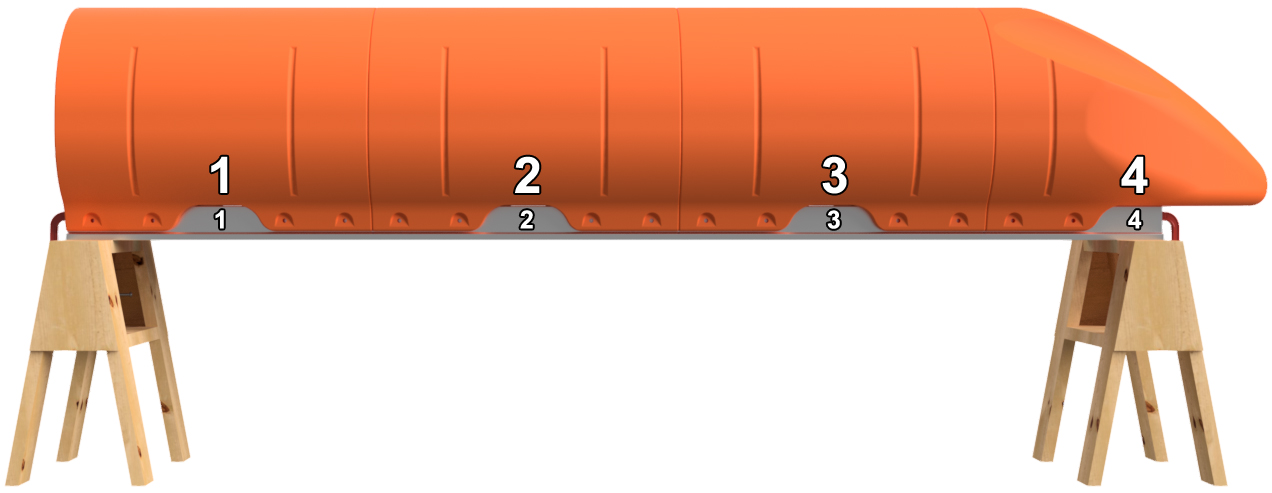

|
STEP 7
Using a standard center punch, make the marks you made with the transfer punch in step 5 more pronounce. This will make the holes easier to drill in the next step.
|

|


























|
STEP 30:
Repeat steps 28 and 29 for the opposite side of the boat. Be sure to start at the front and work your way to the rear of the boat as you install the hat channels.
|
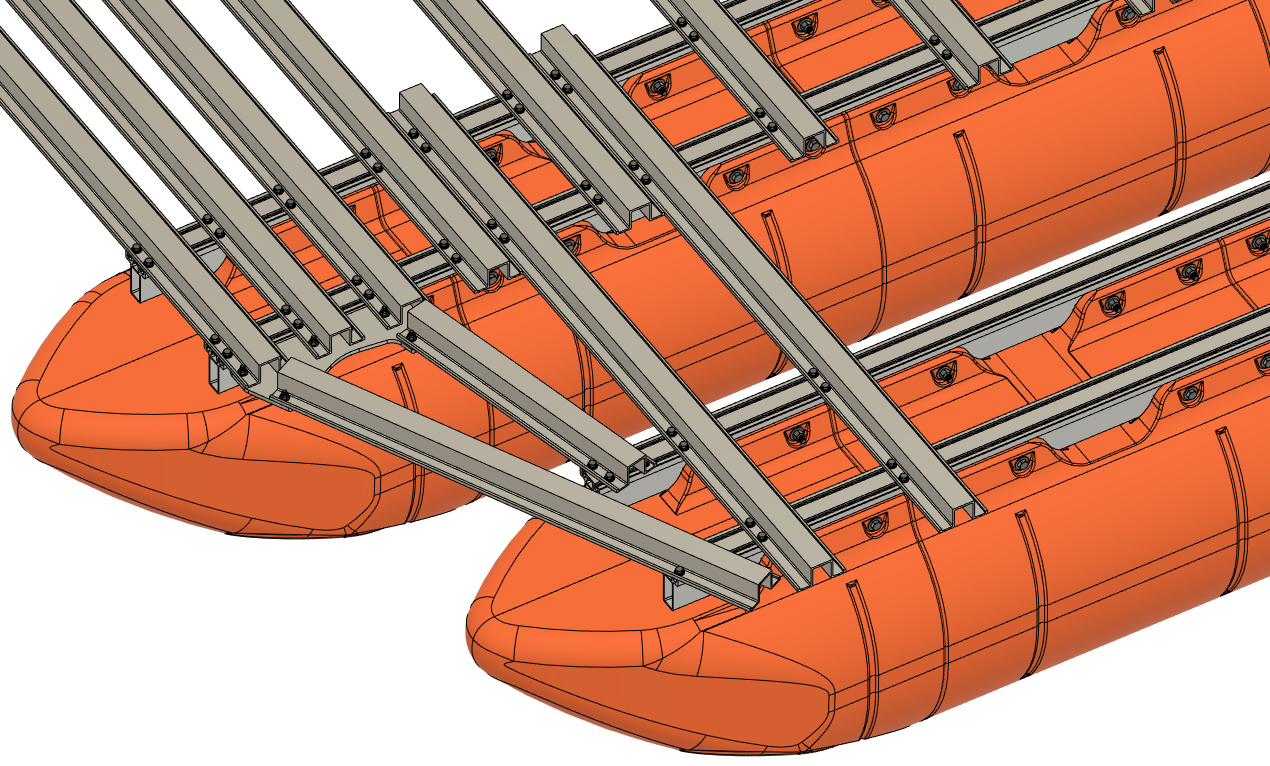
|


|
YOUR KIT IS COMPLETED!
Let's be honest, that was a lot of work and you did a great job! Your frame and floats kit assembly has been completed, so take a break and dream about what you'll build on top.
|
